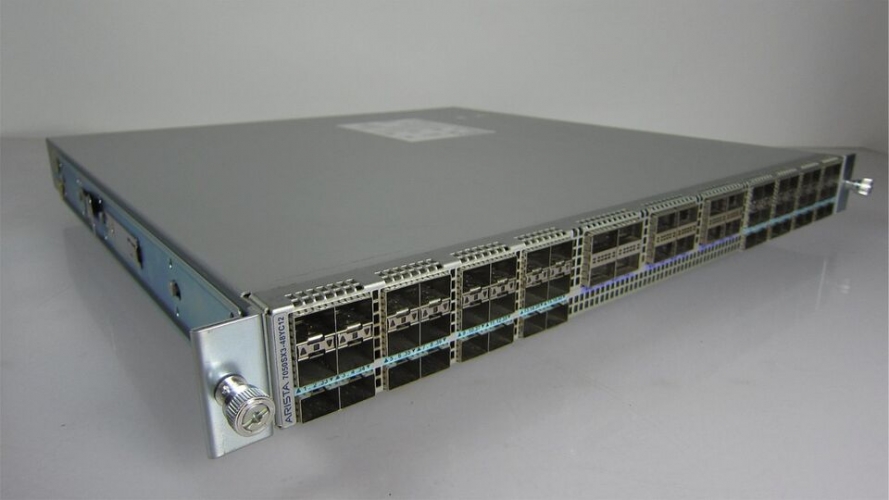Choose More Power Without the Price Tag: Comparing the 7050SX3-48YC12-F vs. 7050SX3-48YC8-F
When evaluating data center switches for Tier 2 ISPs, content delivery providers, or any growing infrastructure, choosing the right model isn’t just about speed—it’s about smart capacity planning, futureproofing, and real-world economics. Today, we’re taking a closer look at two nearly identical models from Arista’s 7050X3 Series: the DCS-7050SX3-48YC12-F and the DCS-7050SX3-48YC8-F.
They may look similar on paper—but let’s unpack where they differ, and why the 48YC12-F may be the best-kept secret in high-performance networking.
Spec Showdown: Where the Numbers Land
| Spec | DCS-7050SX3-48YC8-F | DCS-7050SX3-48YC12-F |
|---|---|---|
| 25G SFP Ports | 48 | 48 |
| 100G QSFP Ports | 8 | 12 |
| Max Throughput | 4.0 Tbps | 4.8 Tbps |
| Max 100G Ports | 8 | 12 |
| Max 50G Ports | 16 | 24 |
| Max 40G Ports | 8 | 12 |
| Total Interfaces | 64 | 96 |
| Latency | 800 ns | 800 ns |
| Power (Typical/Max) | 124W / 301W | 170W / 325W |
| Airflow | Front-to-Rear & Reverse | Front-to-Rear |
| Rack Units | 1RU | 1RU |
What Does That Extra Throughput Really Mean?
The C12 model delivers 20% more bandwidth—4.8 Tbps vs. 4.0 Tbps. That alone means greater flexibility in uplink architecture, denser leaf-spine connectivity, or more east-west data movement for applications like distributed storage, AI/ML pipelines, or NVMe-over-Fabric backbones.
In simple terms: the C12 gives you 4 more QSFP100 ports—equivalent to adding another full 400G of uplink capacity. That can be the difference between needing an extra switch—or not.
Why Do Some Choose the 8-Port Model?
The DCS-7050SX3-48YC8-F remains popular for one reason: it just fits for many networks. Not everyone needs 12x100G uplinks, and 8 may be more than enough for top-of-rack (ToR) aggregation or moderate spine deployments. Plus, slightly lower power draw can be a factor in dense rack deployments where thermal budgets are tight.
But Here's the Catch: The C12 May Now Be Cheaper.
Due to current market dynamics, Terabit Systems is offering aggressive pricing on the 48YC12-F, making it cost-competitive—or even cheaper—than the 8-port version.
This flips the script: you get more bandwidth and more future flexibility without paying a premium.
Who Should Seriously Consider the C12?
- Tier 2 ISPs and Carriers needing futureproof capacity
- High-performance compute clusters or storage-heavy environments
- CDN edge sites or metro PoPs with frequent east-west data movement
- Budget-conscious buyers who want the best bang for their buck per Tbps
Bottom Line: Don’t Let Port Count Fool You
The DCS-7050SX3-48YC12-F is not overkill—it's smart headroom. For those seeking flexibility, long-term growth, and performance per dollar, this is your chance to step up your core or leaf network with a powerful, proven switch—and do it for less than you'd expect.
Check out our current stock and click here to email a Terabit rep today or call +1 (415) 230-4353 for special pricing before they're gone.

